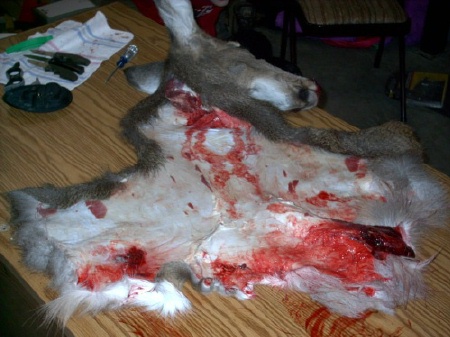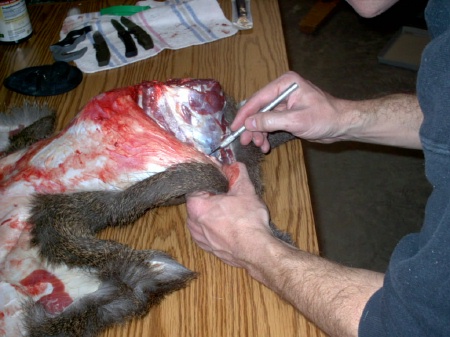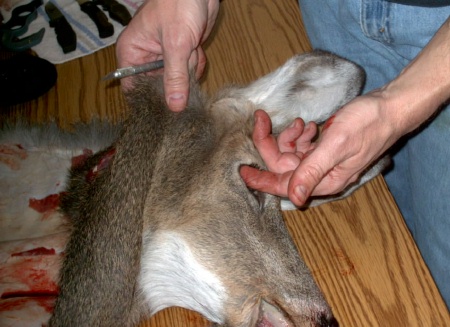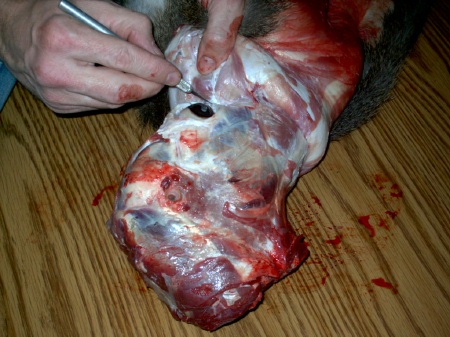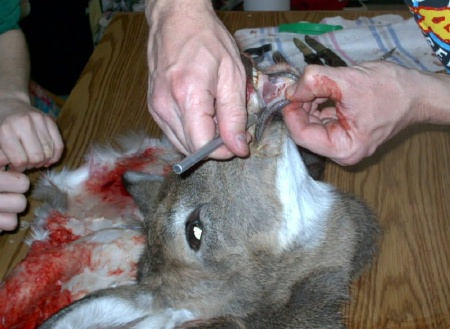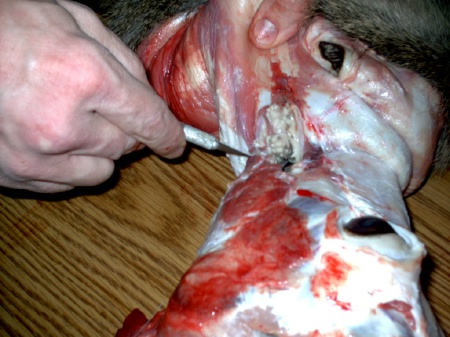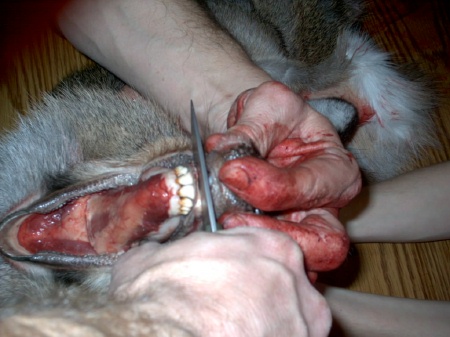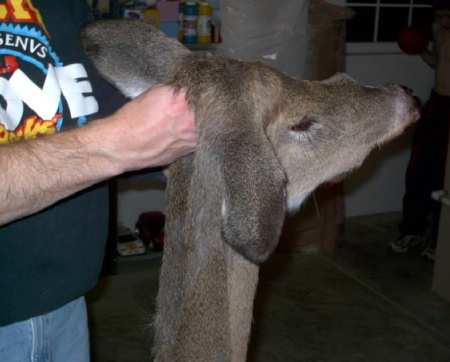|
Caping A Deer HeadOver the last three years I have caped nine whitetail deer heads, four bucks and five does. The first head that I caped was the spike that my son shot two years ago. I didn't want to mess it up and it took me a good while to do. I can't remember how long it took but I completed it without too many mistakes. I have now become faster and can take the skin off of the head in half an hour or so. This does not include turning the lips, ears, eyes or splitting the nose. For this page I would like to go over the process of caping a deer head to show you that you can do it yourself if you would need to. If possible the best thing to do with a deer that you want to mount is to get it to the taxidermist as soon as possible and let them do the whole process, but sometimes this is not feasible. If you cannot get the deer to the taxidermist we'll talk a little about doing the job yourself. Remember, I am not a trained taxidermist. I'm just a whitetail hunter that watched a couple of videos a few times and read a couple of manuals. I do not use many tools for caping a deer head, just my small field dressing knife and an Exacto knife. I use the knife to skin up the neck and the Exacto knife to skin with once I get to the ears. I also use the field dressing knife to cut the nose cartilage. If you are skinning the whole deer yourself, which you most likely will, it is best to remove the entire hide. If you do not want to do this, then make sure that you start at least a few inches behind the front legs when caping a deer for a shoulder mount. Cut around the entire girth of the body a few inches behind the legs and continue to skin towards the head. Make sure that you skin down the front legs several inches as well. Some of the shoulder forms include the front of the legs. If in doubt, include more of the skin. The taxidermist can easily cut away what is not needed.
There are two ways to cape a deer head. One is to make a cut up the back of the neck. This makes the skinning process somewhat easier as you progress up the neck. The other method, of course is to not make a cut up the back of the neck. If you do not know if your taxidermist wants the cape cut up the back or not, you are better off not to cut it.
To remove the hide from around the antlers, I like to use my Exacto knife. Some use a screwdriver or a sharpened screwdriver. Once you have reached the ears, you can just cut the ears off where they meet the head. When you are cutting the ears off, make sure that you do not cut through the hide on the opposite side of the ear. I usually keep my fingers on the other side of the ear when I am cutting the ear. You can tell when you are getting close to your fingers and I don’t know about you but I will not cut my fingers if I can keep from it. After the cape is past the ears and antlers you now have to get past the eyes. To do this you have to stick your finger in the eye as you cut towards it and if you don’t cut your finger you will remove the hide from the eye without problems.
|
